Discovering Aydın's Timeless Treasures: A Journey Through the Ancient Cities of Western Turkey
If you're looking for a journey through time and history, Aydın, Turkey is a perfect destination with its ancient cities. Here, amidst stunning natural beauty, lies a treasure trove of archaeological sites that offer a glimpse into the rich cultural and architectural heritage of this region.
From the awe-inspiring Temple of Apollo in Didyma to the well-preserved ancient city of Miletus, there's no shortage of wonders to discover. Join us on that journey we explore the mysteries and marvels of Aydın's ancient cities.
Aphrodisias
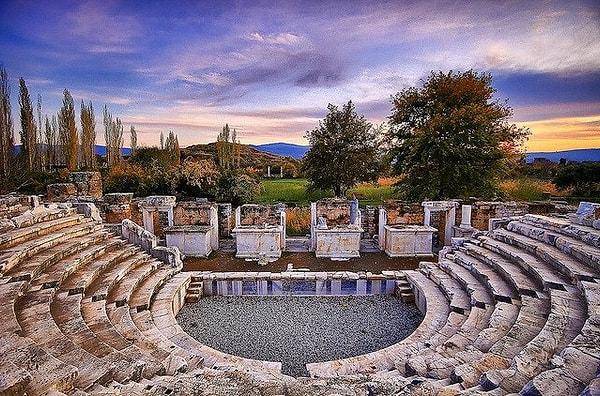
Aphrodisias ancient city, located in the Aydın, Turkey, was once a thriving center of art, culture, and religion in the Hellenistic and Roman eras. Named after Aphrodite, the Greek goddess of love and beauty, the city was believed to have been founded in the 3rd century BCE. Renowned for its marble quarries, Aphrodisias supplied the region with high-quality marble used to create intricate sculptures and architectural masterpieces. The city's prosperity and significance reached its zenith in the 1st and 2nd centuries CE, during which it became a prominent center of sculpture and the arts, attracting artists and scholars from around the Mediterranean.
A visit to Aphrodisias today offers a glimpse into the grandeur of this once-magnificent city. Among the most notable remains are the Temple of Aphrodite, the city's patron deity, which was later converted into a Christian basilica; the Sebasteion, a monumental civic complex dedicated to the Roman emperors; and the well-preserved stadium, which is considered one of the best examples of its kind in the ancient world. The on-site museum, housed in a former Roman bath complex, showcases an impressive collection of sculptures, mosaics, and other artifacts discovered during excavations. As a testament to its historical and cultural importance, Aphrodisias was inscribed on the UNESCO World Heritage List in 2017, ensuring its ongoing preservation and study.
Didyma

Nestled on the western coast of modern-day Turkey, Didyma was an esteemed religious sanctuary and oracle center dedicated to the god Apollo. The city was connected to the ancient city of Miletus, situated about 12 miles (20 kilometers) to the north, by a sacred road. As a center of worship and pilgrimage, Didyma attracted visitors from across the Mediterranean world, who came seeking prophetic guidance and insight from the Temple of Apollo.
The Temple of Apollo, known as the Didymaion, is the most famous and well-preserved structure in the ancient city. This magnificent temple, characterized by its colossal size and intricate Hellenistic architecture, was first built in the 6th century BCE and later rebuilt and expanded after the Persians destroyed it in 494 BCE. Although construction continued over several centuries, the temple was never fully completed. Nonetheless, it remains an impressive testament to the architectural prowess and religious fervor of the ancient world. Today, visitors can explore the remarkable ruins of Didyma, which include the Temple of Apollo, a sacred spring, and a theater, providing a glimpse into the past and an enduring reminder of the site's historical importance.
Tralleis
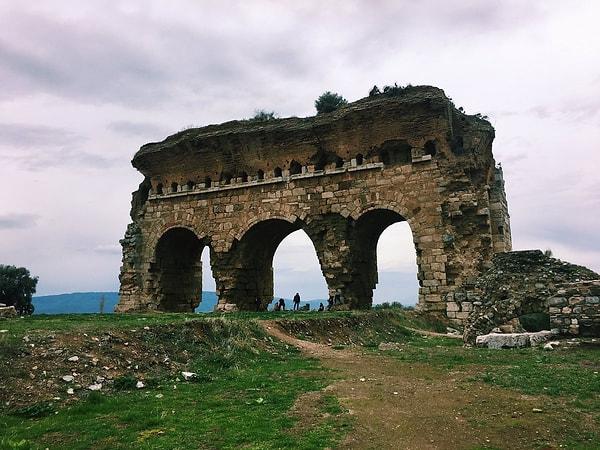
Dating back to the Hellenistic period, Tralleis was a significant urban center in the ancient world, boasting a rich history that spans various civilizations, including the Lydians, Persians, Greeks, Romans, Byzantines, and Seljuks. The city thrived as a hub of commerce and culture, benefitting from its strategic position along major trade routes that connected the Aegean Sea to the Anatolian Plateau. Over the years, Tralleis saw numerous invasions and conquests, each leaving its own unique mark on the city's architecture, culture, and societal structure.
Today, the ruins of Tralleis offer a fascinating glimpse into the past, with well-preserved remnants of the city's architectural heritage. Among the notable structures are the ancient theatre, an impressive stadium, and a stunning odeon, which allude to the city's cultural importance in antiquity. Additionally, the site boasts temples dedicated to various deities, bath complexes, and an extensive necropolis that showcases the diverse burial practices of the ancient inhabitants. The history of Tralleis is not only a testament to the city's resilience and adaptability but also a rich tapestry of the various civilizations that contributed to its growth and development, making it a significant historical and archaeological treasure in modern-day Turkey.
Nysa
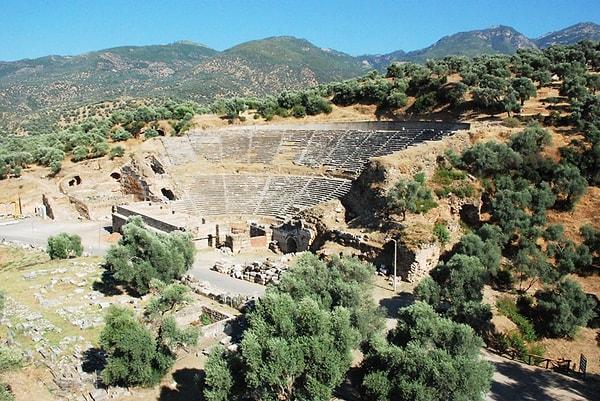
Located in Aydın Turkey, Nysa ancient city was once a flourishing center of culture, education, and commerce. Established during the Hellenistic period, it prospered under the rule of the Seleucid Empire and the Attalid Kingdom, followed by the Roman Empire. The city was named after the mythological land of Nysa, where the Greek god Dionysus was believed to have been raised.
Numerous archaeological remains unearthed in the area reveal the rich history and architectural splendor of Nysa. Among the notable structures are the well-preserved Roman theatre, which could accommodate up to 12,000 spectators, and the adjoining stadium, where athletic events and competitions were held. The city also boasted a grand library, known as the Library of Nysa, which was considered one of the most important centers of learning in the ancient world. Other significant ruins include the agora, the necropolis, and the sacred cave of Pluto. Today, the site of ancient Nysa attracts visitors from around the world, who come to marvel at the remnants of this once-great city and delve into its fascinating past.
Alabanda
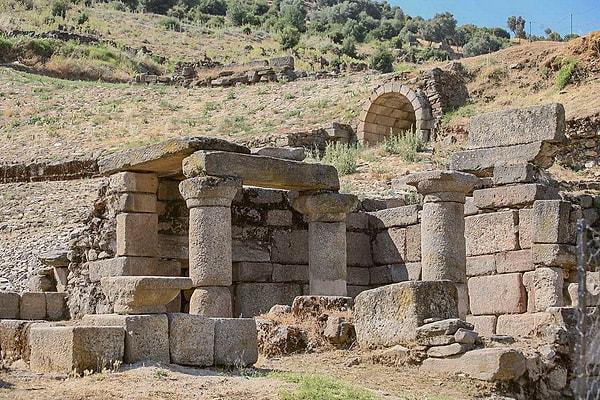
Alabanda, a remarkable ancient city located in the Aydın Province of Turkey, is a site steeped in history and architectural wonders. Established during the Hellenistic period, Alabanda was a prominent city within the ancient region of Caria, which thrived under various empires such as the Seleucids, Pergamon, and Roman Empire. Over the centuries, Alabanda was known by several names, including Antiochia of the Chrysaorians and later as Antiochia on the Maeander.
Alabanda's ruins, which can be explored today, reveal a rich tapestry of architectural styles and influences, reflecting the city's diverse cultural heritage. Among the most notable remnants are the ancient agora (marketplace), the Hellenistic and Roman temples dedicated to Zeus, Apollo, and Artemis, and the well-preserved theater, which once accommodated up to 8,000 spectators. Additionally, the site showcases numerous examples of Roman-era public buildings, including a gymnasium, a council house (bouleuterion), and bath complexes. The city's necropolis, with its elaborate rock-cut tombs, also attests to the wealth and status of Alabanda's inhabitants. As a testament to its enduring legacy, Alabanda continues to captivate historians, archaeologists, and visitors alike, serving as a window into the fascinating history of the ancient world.
Priene

Priene ancient city boasts a rich history that dates back to the 2nd millennium BCE. Once a thriving Ionian city-state, Priene was nestled at the base of Mount Mycale and overlooked the Maeander River, offering stunning views of the surrounding landscape. The city was celebrated for its well-planned grid system, designed by the famous urban planner Hippodamus of Miletus, which featured broad, straight streets and evenly distributed residential blocks. In its prime, Priene was a prominent member of the Ionian League, a confederation of twelve Greek city-states, and was known for its flourishing arts and culture.
Today, the archaeological site of Priene offers visitors a glimpse into the ancient world, as well-preserved ruins give testament to the city's architectural prowess. Among the most notable structures is the Temple of Athena Polias, designed by the renowned architect Pytheos, who also worked on the Mausoleum of Halicarnassus, one of the Seven Wonders of the Ancient World. Other significant landmarks include the Bouleuterion, the Prytaneion, the Theater, and the Agora, each showcasing the city's blend of Hellenistic and Roman architectural styles. As an important testament to the region's rich historical and cultural heritage, the ancient city of Priene continues to captivate the imagination of visitors and scholars alike.
Magnesia
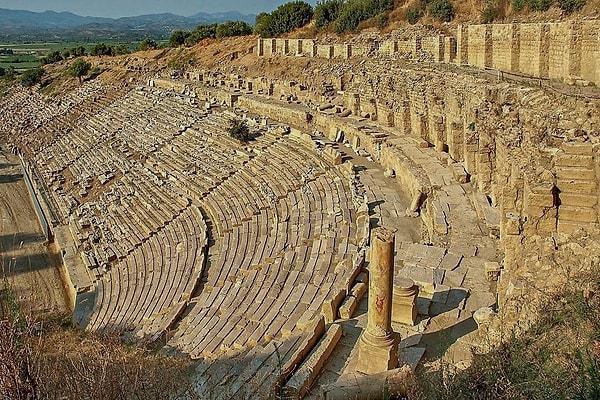
Magnesia is another ancient city in Aydın. It boasts a rich history dating back to the 5th century BCE. The city, originally founded by the Thessalian tribe of Magnetes, was strategically situated at the foot of Mount Thorax, near the confluence of the Lethacus and Maeander Rivers. The location allowed Magnesia to thrive as a regional hub for trade and commerce throughout various historical periods. Over time, the city was influenced by several empires, including the Lydians, Persians, Seleucids, Pergamenes, and Romans, each of which left their unique mark on Magnesia's architecture and cultural heritage.
Notable ruins at the Magnesia archaeological site include the Temple of Artemis Leucophryene, which is considered one of the Seven Wonders of the Ancient World. This impressive structure, built during the Hellenistic period, features ornate carvings and intricate architectural details that reflect the city's prosperity at the time. Other significant remains include the Agora, Stoa, and the Stadium, which once hosted athletic competitions and could accommodate up to 30,000 spectators. As you explore the ancient city of Magnesia, you'll be transported back in time, experiencing the fascinating blend of historical influences that have shaped this remarkable site.
Miletus

Founded in the 10th century BCE, Miletus ancient city played a crucial role in the development of Western philosophy and science. It was the birthplace of Thales, one of the Seven Sages of Greece and the founder of the Milesian School of philosophy, which focused on the study of nature and the universe. Miletus was also home to Anaximander, another prominent philosopher who developed the concept of the infinite and made significant contributions to cartography and astronomy.
Throughout its history, Miletus was a prosperous trading center and a major seaport, serving as a gateway between the Aegean and Mediterranean worlds. The city's impressive architecture, including the Temple of Apollo and the Bouleuterion (council chamber), reflected its wealth and cultural influence. However, Miletus declined in the late Roman period and was eventually abandoned, leaving behind impressive ruins that can still be seen today, including the well-preserved theater and stadium.
Keşfet ile ziyaret ettiğin tüm kategorileri tek akışta gör!

Send Comment